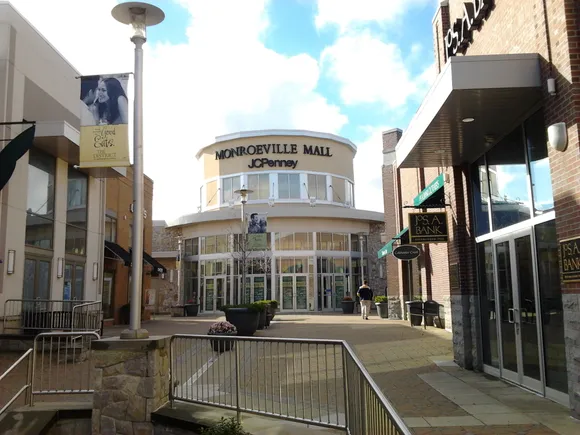Walmart recently expanded its real estate portfolio with a $34 million purchase.
However, the type of property the retailer bought gave some industry experts and observers pause. That’s because Walmart bought the Monroeville Mall, a more than 50-year-old shopping center near Pittsburgh with over 100 operating businesses.
To several industry experts and analysts, the retailer made a smart move — the Monroeville Mall offers an attractive real estate parcel that’s already set up for retail use. It also gives Walmart a measure of control on what businesses operate in the center.
“This move aligns with broader retail trends where major players are rethinking how they use real estate, especially as traditional malls struggle with declining foot traffic,” Jonathan Zhang, a professor at Colorado State University’s College of Business, told Retail Dive in an email. “Walmart could see this as an opportunity to repurpose underperforming malls into mixed-use spaces with a strong retail anchor — whether that’s a supercenter, a fulfillment hub or a combination of both.”
If this strategy works in Pittsburgh, the company may try it again elsewhere, tapping into underperforming malls with prime locations, Zhang noted.
Walmart is working with Texas-based Cypress Equities to lead the redevelopment process, which includes the mall proper and an annex building of additional retail stores. Beyond that, Walmart isn’t offering many details on its plans.
In response to questions from Retail Dive, the retailer said it didn’t have anything to add beyond a statement it provided earlier this month confirming the mall’s purchase. In that statement, Walmart said in part that it “is very interested in being part of any future redevelopment of this site” and working alongside Cypress on operations and potential redevelopment plans.
A good deal for a small investment
A ready-to-go parcel of real estate for $34 million represents a modest investment for Walmart, which reported $681 billion in revenue for its most recent fiscal year. In its latest earnings statement, the company reported $260 billion in total assets. Nearly $120 billion of that figure was property and equipment.
“I don’t think they have any interest in the mall itself. I think it’s a real estate deal,” Nick Egelanian, president of SiteWorks, a retail development firm not connected with the deal, told Retail Dive.
Rather than a desire to get into the mall landlord business, Egelanian said it appears the price was right for a site they wanted — the mall operation is a fringe benefit. From a logistical or financial point of view, it’s generally easier for companies to redevelop existing retail parcels, according to Zhang.
That process comes with advantages such as favorable zoning and fewer regulatory hurdles versus starting from scratch, Zhang said. “There’s also an efficiency factor — utilities and transportation access are already in place, which can save millions in development costs.”
Even if some challenges arise, such as dealing with existing leases or needing to update outdated infrastructure, the cost-benefit equation often favors redevelopment, Zhang said.
Neil Saunders, managing director of GlobalData, noted that the mall’s purchase price is “a relatively small investment” for a company of Walmart’s size. The retailer may have a redevelopment vision that includes a new Walmart store or might be testing ways to diversify its revenue streams with property ownership, Saunders said in an email to Retail Dive.
“The latter is not all that unusual as Ikea, for example, owns a lot of shopping malls and has a big real estate business. It is also the case that Walmart has been looking beyond its core retail business for avenues to bolster growth,” Saunders said.
For Zhang, buying a mall gives Walmart a three-point redevelopment head start.
“First, the location is already a proven commercial hub with built-in infrastructure — roads, utilities, and parking — all of which would take time and money to develop from scratch on an empty parcel,” Zhang said. “Second, the mall already has tenants and customer traffic, which means Walmart can generate rental income while planning its redevelopment.”
Finally, such a move allows Walmart to control a high-traffic retail space instead of competing for it, according to Zhang. That lets the company shape the future of the property to align with long-term business goals.
Still, mall-related real estate is often complicated and the future of malls is in question. Yet, the popular narrative on mall performance — that many are dying or dead — is shifting as visits at indoor and outdoor malls rise, according to recent data from Placer.ai. Visits in January rose 5.5% for indoor malls, nearly 3% for open-air shopping centers and 2.7% for outlet malls from a year ago.
Performance also largely depends on the property. Class A malls are seeing more robust demand than Class B or Class C mall spaces, according to a recent JLL report, and lifestyle centers continue to do the best. Overall, though, malls have the highest vacancy rate across property types.
But the performance of malls does not rest solely with the owner. Because anchor stores often own their own buildings and land, developers might be required to buy out the contract of an operating department store before it can shut down.
If or when stores close, the legal encumbrances around redevelopment sometimes disappear with them, Egelanian said. As a result, a depressed mall lacking a robust roster of high-performing stores is often a good deal because there are fewer legal hurdles blocking redevelopment plans. It’s a good time to be a buyer as well. According to JLL, current market conditions present an opportunity for investors to acquire retail properties below their replacement costs
Retail is an inherently complex industry and companies that branch too far away from their core strengths tend to fail, Egelanian said. As a result, the industry will be watching closely to see how Walmart handles the Monroeville Mall.

